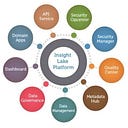Streaming Options for UI: SSE, WebSocket, and Long Poll
When building real-time applications, choosing the right streaming technology is crucial for delivering a seamless user experience. In this blog post, we’ll explore different streaming options for UI development, compare their features, and provide guidance on when to use each technology.
Server-Sent Events (SSE)
Server-Sent Events (SSE) is a simple and efficient protocol for one-way server-to-client communication. It allows the server to push data to the client over a single HTTP connection.
Example:
// Client-side JavaScript
const eventSource = new EventSource('/stream');
eventSource.onmessage = (event) => {
console.log('Received:', event.data);
};
// Server-side (Node.js with Express)
app.get('/stream', (req, res) => {
res.writeHead(200, {
'Content-Type': 'text/event-stream',
'Cache-Control': 'no-cache',
'Connection': 'keep-alive'
});
const sendEvent = () => {
res.write(`data: ${new Date().toLocaleTimeString()}\n\n`);
};
const intervalId = setInterval(sendEvent, 1000);
req.on('close', () => {
clearInterval(intervalId);
});
});Pros:
- Simple to implement
- Works over standard HTTP
- Automatic reconnection
Cons:
- One-way communication only
- Limited browser support for older versions
WebSocket
WebSocket provides full-duplex, bidirectional communication between client and server over a single TCP connection.
Example:
// Client-side JavaScript
const socket = new WebSocket('ws://localhost:8080');
socket.onopen = () => {
console.log('Connected to WebSocket');
socket.send('Hello, server!');
};
socket.onmessage = (event) => {
console.log('Received:', event.data);
};
// Server-side (Node.js with ws library)
const WebSocket = require('ws');
const wss = new WebSocket.Server({ port: 8080 });
wss.on('connection', (ws) => {
ws.on('message', (message) => {
console.log('Received:', message);
ws.send('Hello, client!');
});
});Pros:
- Full-duplex communication
- Low latency
- Supports binary data
Cons:
- Requires WebSocket-specific server setup
- May be blocked by some firewalls
Long Polling
Long polling is a technique where the client repeatedly polls the server for new information, and the server holds the request open until new data is available.
Example:
Long polling is a technique where the client repeatedly polls the server for new information, and the server holds the request open until new data is available.
Example:
// Client-side JavaScript
function longPoll() {
fetch('/poll')
.then(response => response.json())
.then(data => {
console.log('Received:', data);
longPoll(); // Immediately start the next long poll
})
.catch(error => {
console.error('Error:', error);
setTimeout(longPoll, 1000); // Retry after 1 second on error
});
}
longPoll();
// Server-side (Node.js with Express)
let clients = [];
app.get('/poll', (req, res) => {
clients.push(res);
req.on('close', () => {
clients = clients.filter(client => client !== res);
});
});
function broadcast(message) {
clients.forEach(client => {
client.json(message);
clients = clients.filter(c => c !== client);
});
}
// Example: Broadcast a message every 5 seconds
setInterval(() => {
broadcast({ time: new Date().toLocaleTimeString() });
}, 5000);Pros:
- Works in all browsers
- Simpler server implementation
Cons:
- Higher latency
- More server resources used
Comparison and Use Cases
When to use SSE:
- For real-time updates where server-to-client communication is sufficient
- When you need a simple implementation that works over standard HTTP
- For applications that require automatic reconnection
When to use WebSocket:
- For applications requiring real-time, bidirectional communication
- When low latency is critical
- For chat applications, multiplayer games, or collaborative tools
When to use Long Polling:
- As a fallback for older browsers that don’t support SSE or WebSocket
- When you need a simple solution that works across all environments
- For applications with less frequent updates
Conclusion
Choosing the right streaming technology depends on your specific use case, target audience, and technical requirements. SSE is excellent for simple, one-way real-time updates, while WebSocket is ideal for bidirectional, low-latency communication. Long polling serves as a reliable fallback option or for less demanding real-time needs.Consider factors such as browser support, server infrastructure, and the nature of your application when making your decision. In some cases, you might even implement multiple technologies to ensure the best possible experience for all users
About:
VerticalServe Inc — Niche Cloud, Data & AI/ML Premier Consulting Company, Partnered with Google Cloud, Confluent, AWS, Azure…60+ Customers and many success stories..
Website: http://www.VerticalServe.com
Contact: contact@verticalserve.com
Successful Case Studies: http://verticalserve.com/success-stories.html
InsightLake Solutions: Our pre built solutions — http://www.InsightLake.com
